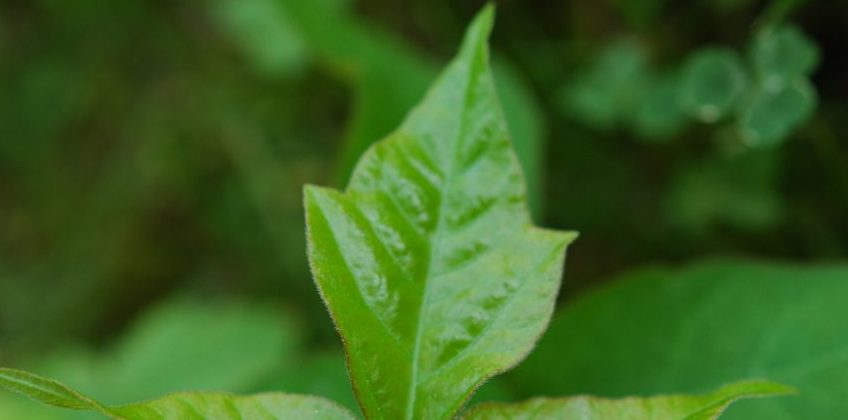
Keep it Safe: 5 Plants to Avoid This Summer
Now that the summer days have arrived and the hot sun is inviting, everyone is bound to increase their time spent outdoors, whether on doing landscape work, playing with a pet or taking a walk. But we, the humans, are not the only ones that find the sun’s rays so beneficial to our health and mood; plants too enjoy the summer sun as many of them blossom all summer long. Since spending time in the yard is bound to become one of your favorite activities, it is of utmost importance to learn which plants can represent a threat to you, your family, your lawn or your pet.
With many unwanted plants growing in a hot sun, it means poisonous plants such as poison ivy and poison oak are due to appear in your garden. In the US and Canada, there are over 700 plants that are considered poisonous, so the odds of keeping your yard poisonous-plants-free without any professional lawn care service are not in your favor. If you think you’re not allergic to any plant, just think about it; over 85% of the world’s population has an allergic reaction when coming into contact with one.
The obvious solution is to avoid these dangerous plants. To do so, first you need to learn what do they look like so you can identify them if they suddenly appear in your yard. Here are 5 poisonous plants you might wanna avoid this summer to keep your yard healthy and safe.
Poison Ivy
Symptoms: blisters, serious itching, rash
The distinguishable three-leaf plant is the number one plant you need to avoid this summer. When you get in touch with a leaf of poison ivy, rest assured you’re getting a blistering rash and serious itching time. Whether as a vine or a shrub growing close to the ground or to a tree, each of those three shiny, toothed leaves is loaded with an oily resin known as urushiol and may cause an allergic reaction. In spring, the leaves are reddish, but in summer, their color is green. One important tip is to NOT scratch the area where you’ve got in contact with poison ivy but instead, use a wet compress.
Poison Oak
Symptoms: serious itching, red blisters, rash
Poison oak, commonly mistaken for poison ivy because of their similar three-leaf look, is also one of the worst enemies you can have in your yard. This tenacious plant can grow both as a vine in the shade or as a shrub exposed to the sunlight. Getting in direct contact with poison oak will immediately result in itchy red blisters on the infected area. Similarly, you should not scratch that area and use wet compress or cold water to ease the itching. When you see a green three-leaf plant with shiny, curved edges in summer, keep your hands off of it, no matter how inviting it may seem.
Poison Sumac
Symptoms: swelling, burning sensation, red blisters, rash
Those who have had a poison sumac rash are familiar with the uncomfortable allergic reaction this seemingly harmless plant can cause. While its appearance may hint that it is a plant that comes straight from Rivendell, the poison sumac can cause a lot of harm. It usually grows in the wild, but it is not as uncommon as one may think for it to appear in a garden. To identify a poison sumac, look for a plant that looks like a tall shrub and which leaves have clusters of seven to thirteen leaflets. Compared to poison oak and poison ivy, this one can cause a lot more severe rash. Interestingly, though, the most effective treatment is also wet compress or cold water.
Wild Parsnips
Symptoms: itching, discomfort, rash
Wild parsnip is a perennial plant that usually grows in dry areas, such as by the side of roads, inhabited fields or pastures. Although not very likely to find it in your landscape, it is important to know how to identify it, because it can give you a blistering rash. The chemicals this plant’s sap contains can cause discomfort and itching and if you expose the infected area on sunlight, it’ll double the pain. In summer, each wild parsnip produces a plenty of tiny yellow flowers. Once you see it, you can never forget it. Applying water on the area is a great relief method.
Stinging Nettle
Symptoms: discomfort, stinging, burning
While it is undoubtedly the least harmless plant on any list of plants to avoid in summer, the stinging nettle is one of the most annoying and most uncomfortable plants your skin could ever get in touch with. The stinging nettle is tall, thin and weedy plants with leaves that are green of color and have tiny, sharp stinging hair. When you rub your hand against this hair, this plant will inject the irritating chemical into your skin and immediately make it turn red and cause itching. What you can do to relieve the pain is wash the area with cold water. Aloe vera moisturizer may further help to ease the itching.
With the days getting longer, homeowners will increasingly start spending more time outdoors, handling all sorts of landscaping chores. One of those chores you should not overlook is to watch out for one of these five poisonous plants. If you think you’re unable to identify them or you’re never too sure of their presence, you can contact a professional lawn care service provider to inspect your yard thoroughly and ensure if it’s all safe and sound.
